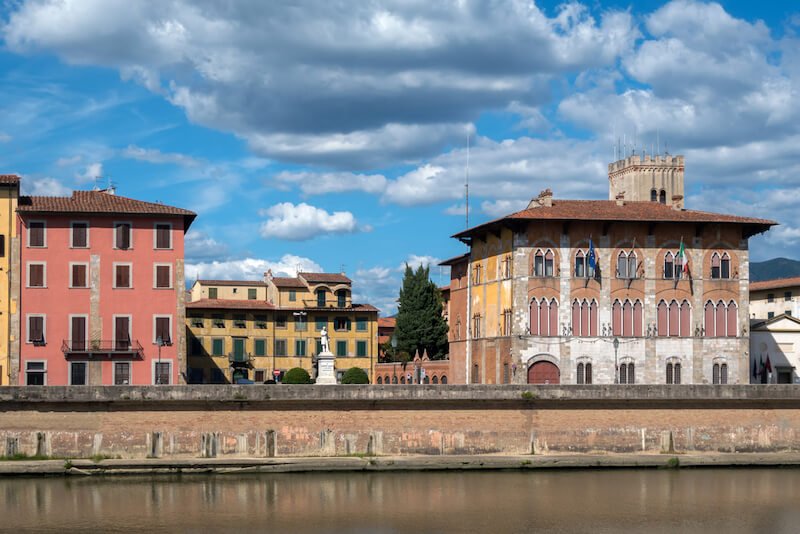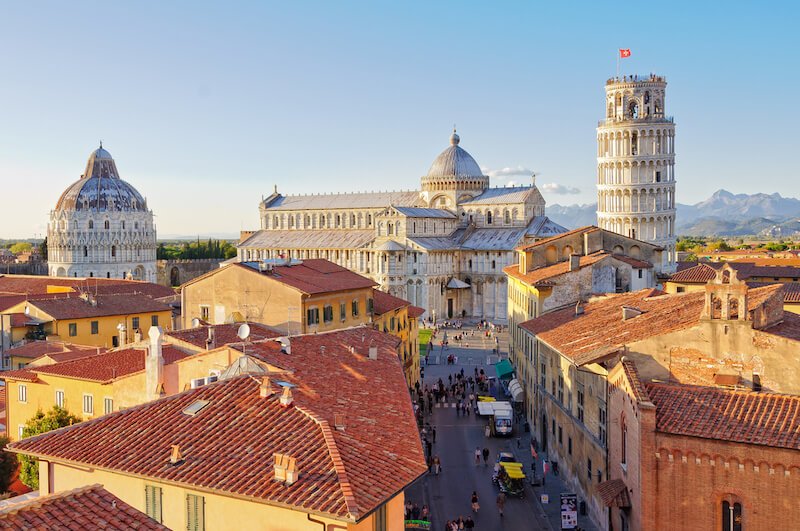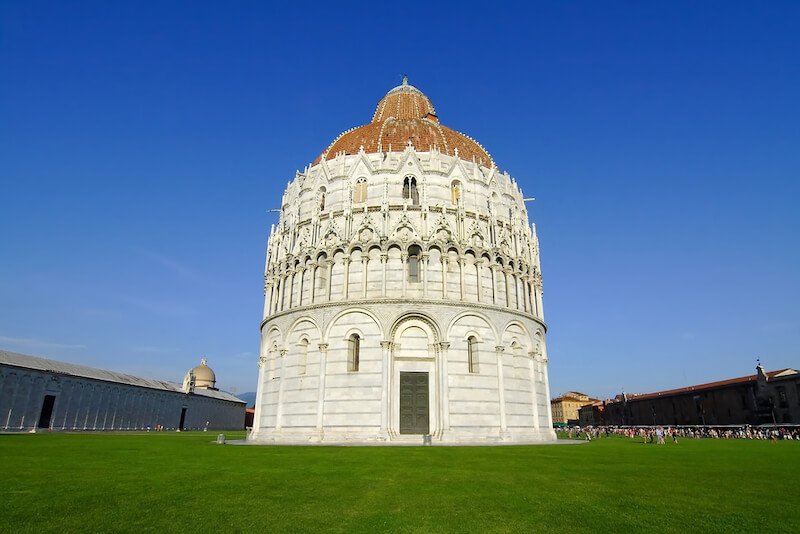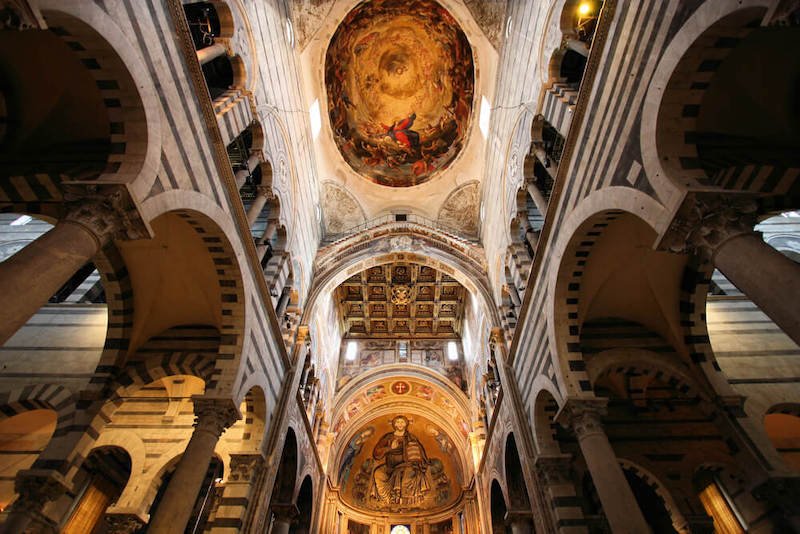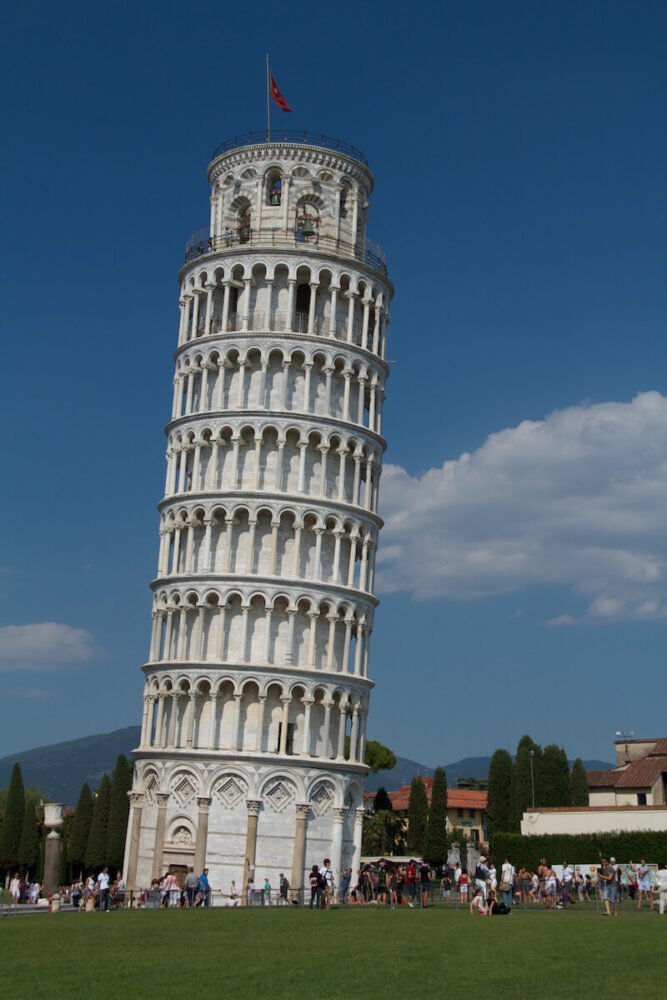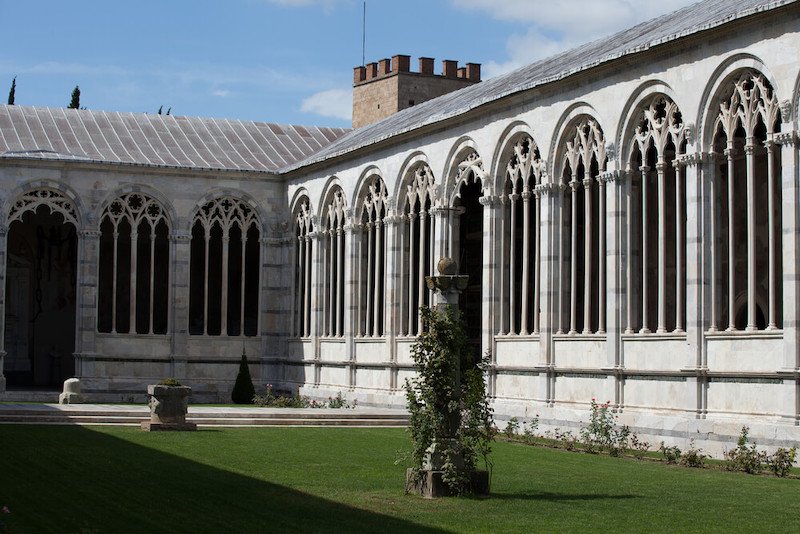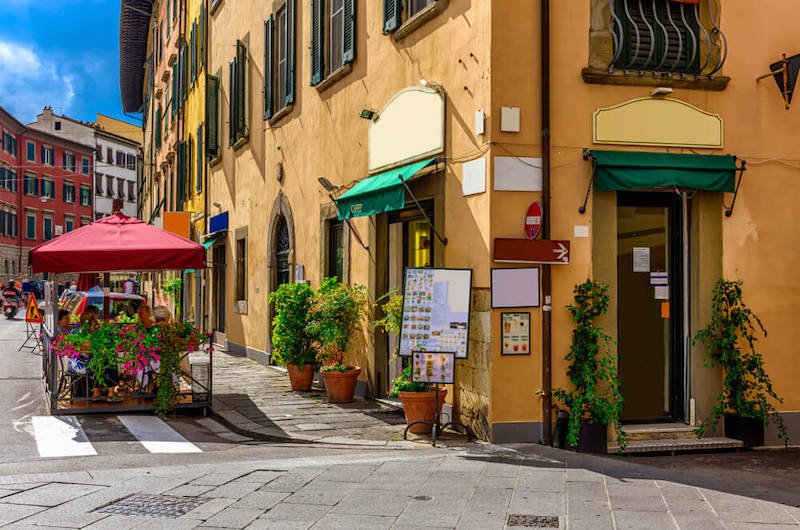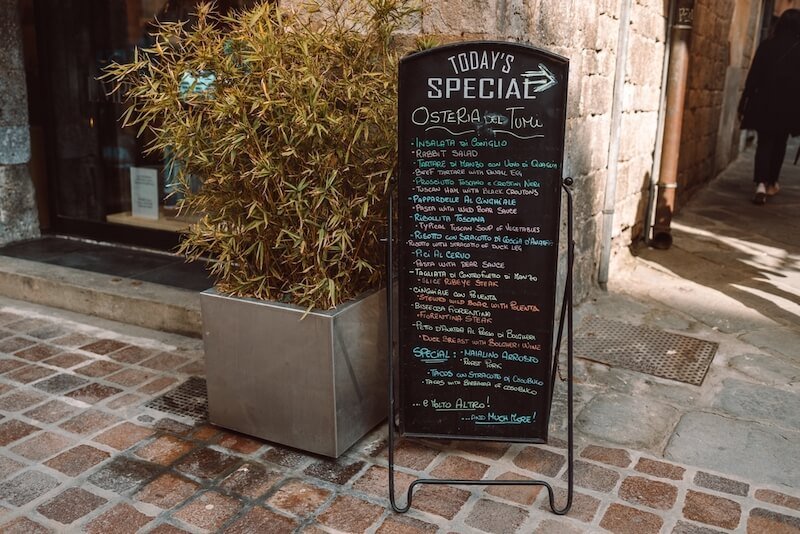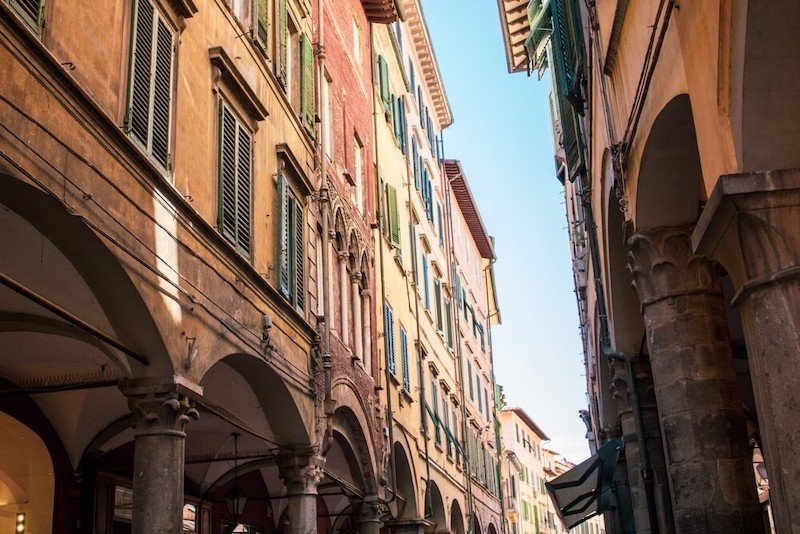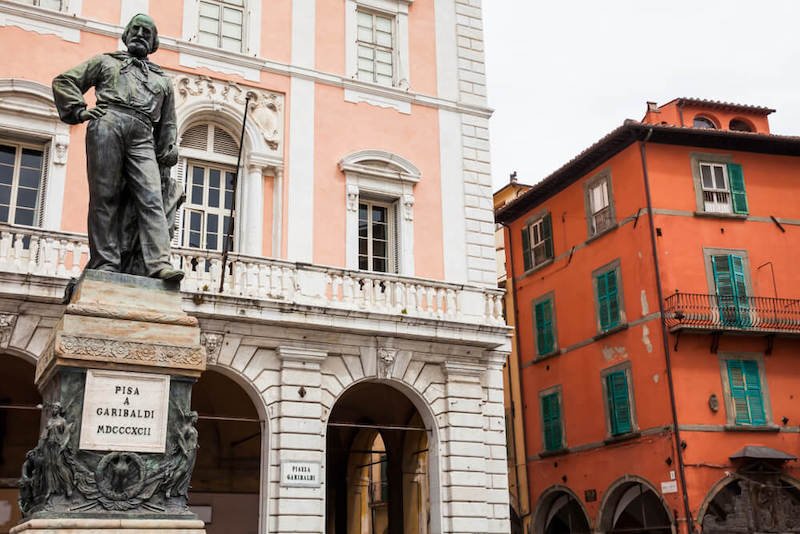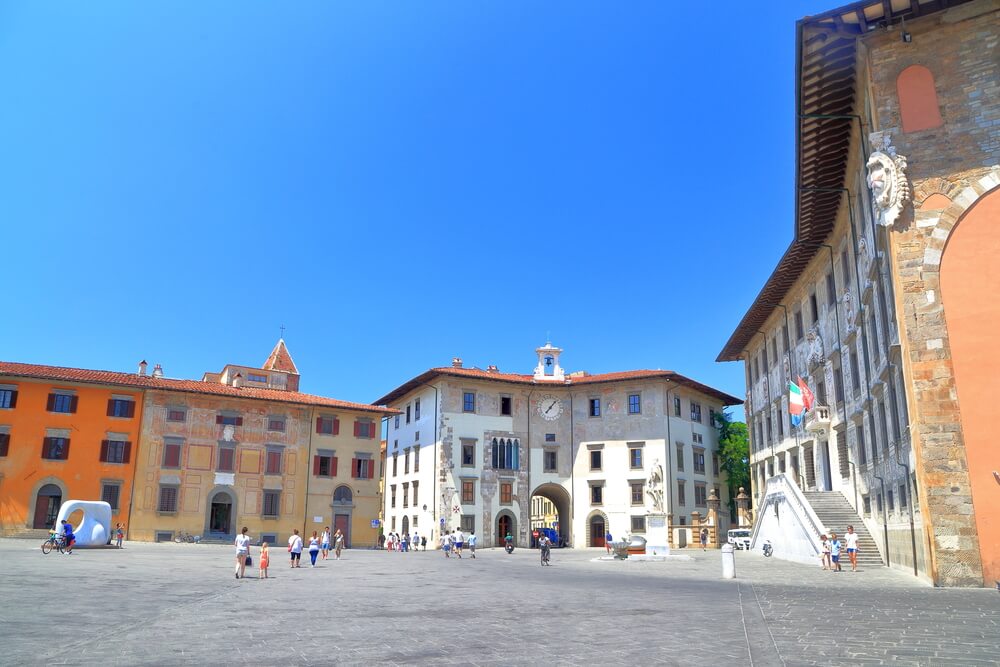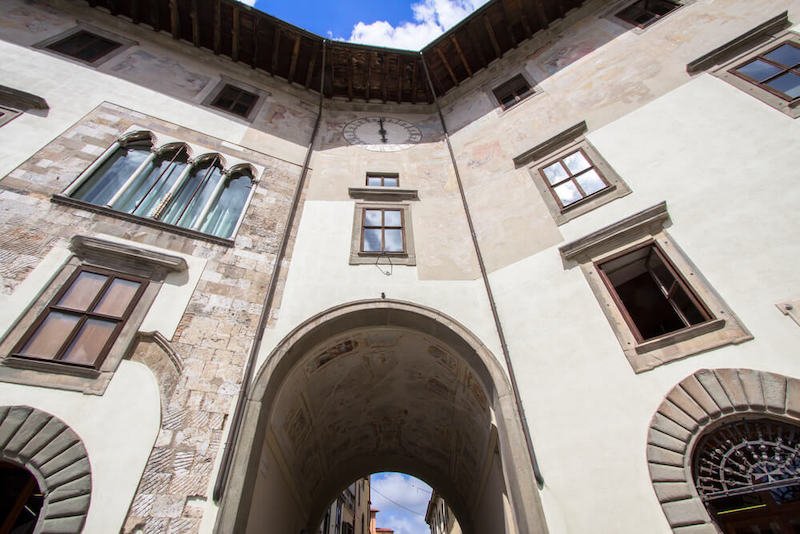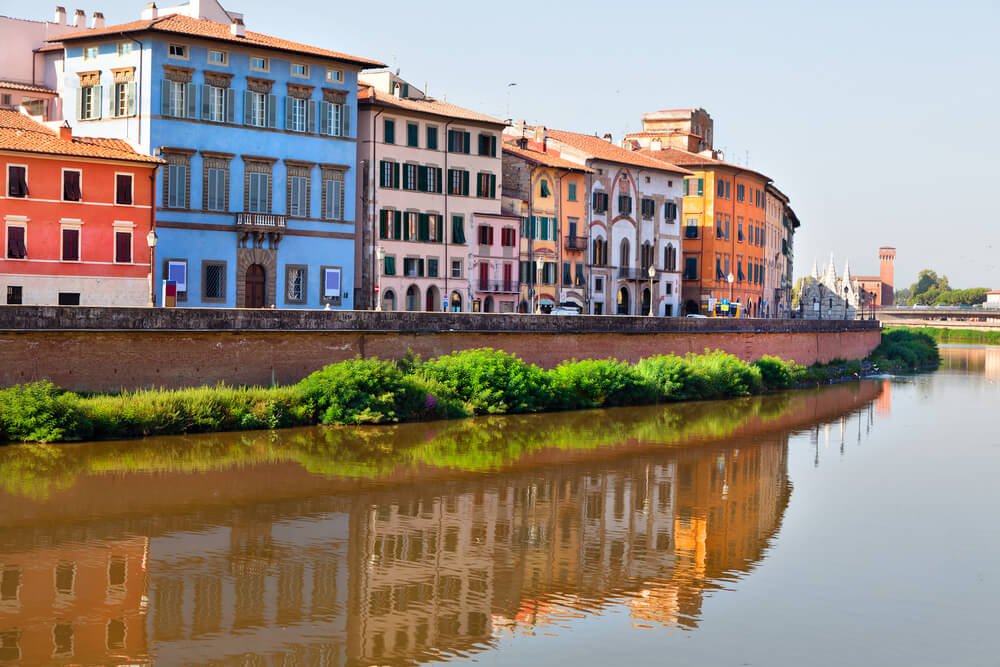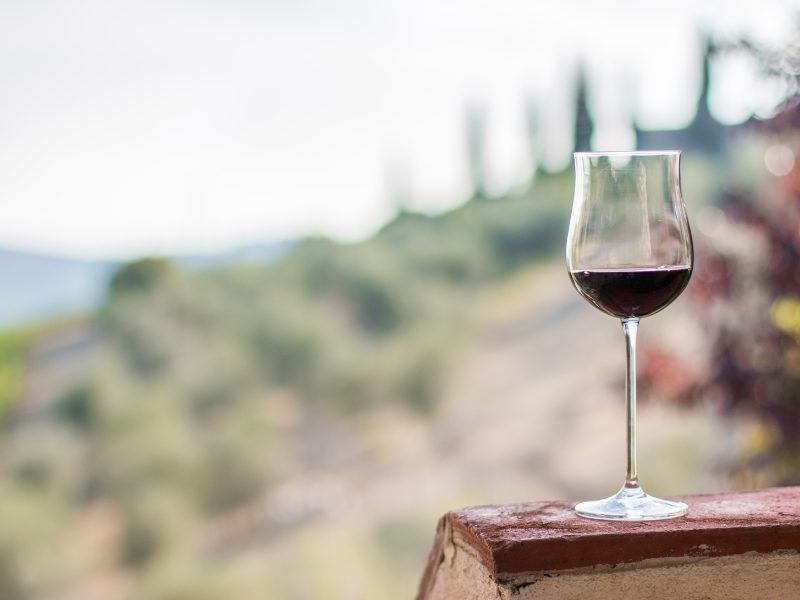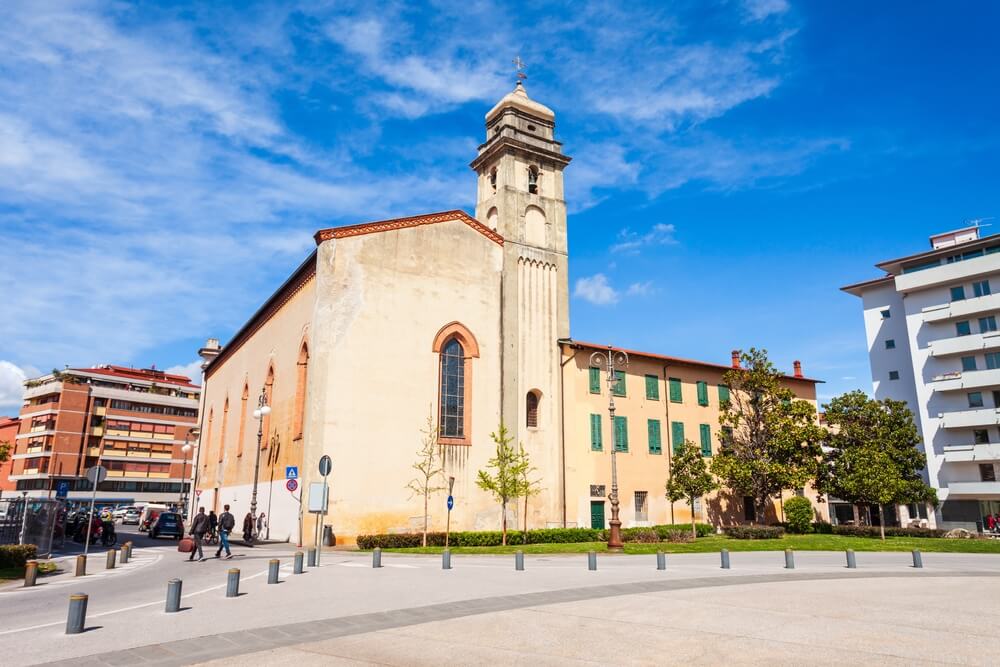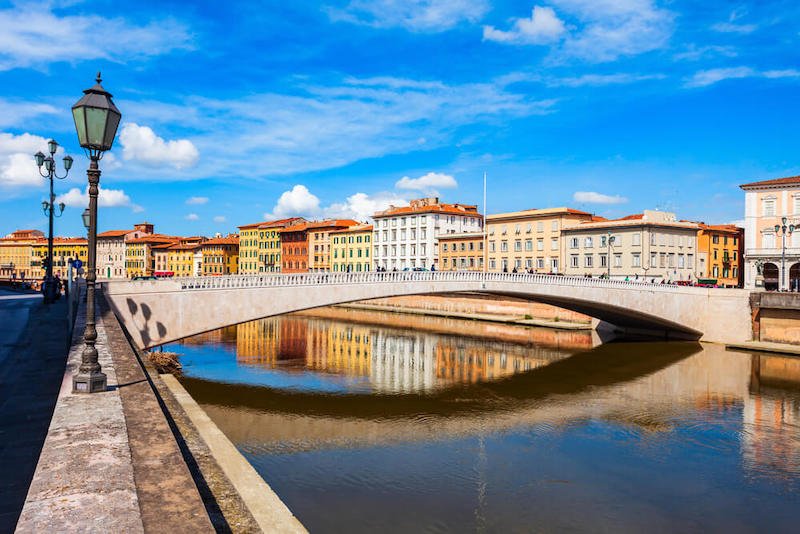The Leaning Tower of Pisa may just be the world’s most successful failure.
Its unintended tilt results from a few careless mistakes and many painstaking fixes, and its unique history is a marvel that captivates visitors to this day.
The Leaning Tower of Pisa was never supposed to be anything special. It was constructed in the 12th century by Bonanno Pisano, a relatively unknown architect.
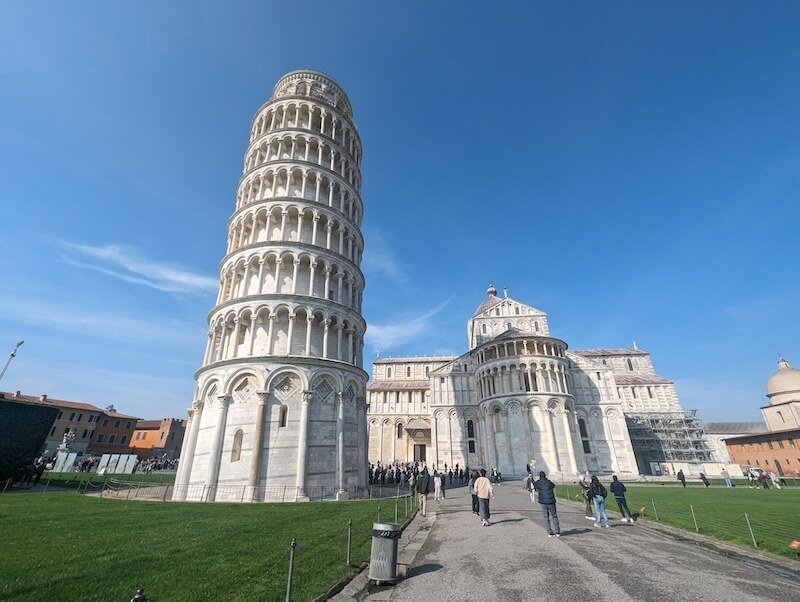
It was intended to be a simple belltower for the Cathedral of Pisa. Easy, no?
Well, many things went awry… why is why it took nearly 200 years to build a simple tower. By contrast, the Colosseum of Rome, still the largest standing amphitheater in the world, took merely ten years).
| ⌛ Planning your Pisa trip in a hurry? Here are my quick picks. 🏝️ Best Pisa Tours & Experiences 1. Leaning Tower & Cathedral Complex Tickets (#1 attraction in Pisa!) 2. Chianti Half-Day Wine Tour (top-rated wine tour) 3. Pisa Food Tour (tastings from 5 eateries on a lunch tour) 🛏️ Best Pisa Hotels 1. Grand Hotel Duomo (best Leaning Tower views!) 2. The Rif (art hotel in a renovated 1900s villa) 3. Palazzo Feroci (luxury converted palazzo with designer interiors) ✈️ Flying into Pisa? Book your airport taxi in advance with Welcome Pickups for a stress-free arrival. 🚘 Planning to travel around Tuscany independently? Look into car rentals in Pisa. |
Here, we’ll go into the history of why the Tower of Pisa (Torre di Pisa, in Italian) leans and how you can visit this unique attraction in Pisa on your upcoming trip to Italy.
Why Does the Pisa Tower Lean?

Just three stories into building the tower, they noticed something was off when it had already begun leaning. In typical Italian fashion, they waited about a century to continue building, trying to counterbalance the shifted weight by building off-balance floors.
After a pause due to wars, they finally added the bell chamber, completing the tower… nearly two centuries later.
But herein is the problem: the tower is made of gray and white marble, a nod to the marble-rich region of Carrera not far away. However, marble is extremely heavy, and that’s a large part of why the issue with the tower leaning began.
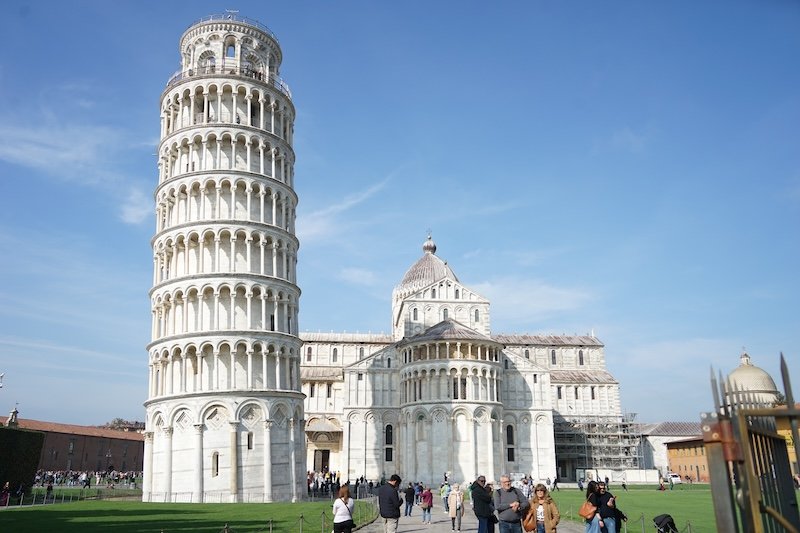
But the marble’s not the only thing to blame — the foundation was poorly planned, only three meters deep atop an unstable mix of clay, sand, and shells. Look, I’m no engineer, but that doesn’t sound like a solid start for a huge marble tower weighing nearly 15,000 metric tons.
Interventions were attempted, giving the tower some of its characteristic columns and arches, but never entirely solving the problem. Finally, in 1990, the tower’s lean grew untenable — leaning by a whopping 5.5 degrees.
They started stabilizing the foundation using soil extraction, straightening the tower significantly, and reducing the lean to a more comfortable angle, just under 4 degrees.
As of now, the Leaning Tower of Pisa is considered stable for the next 200 years, when it will undoubtedly need to be worked on again—assuming we still have a planet in 200 years.
Getting to the Leaning Tower of Pisa
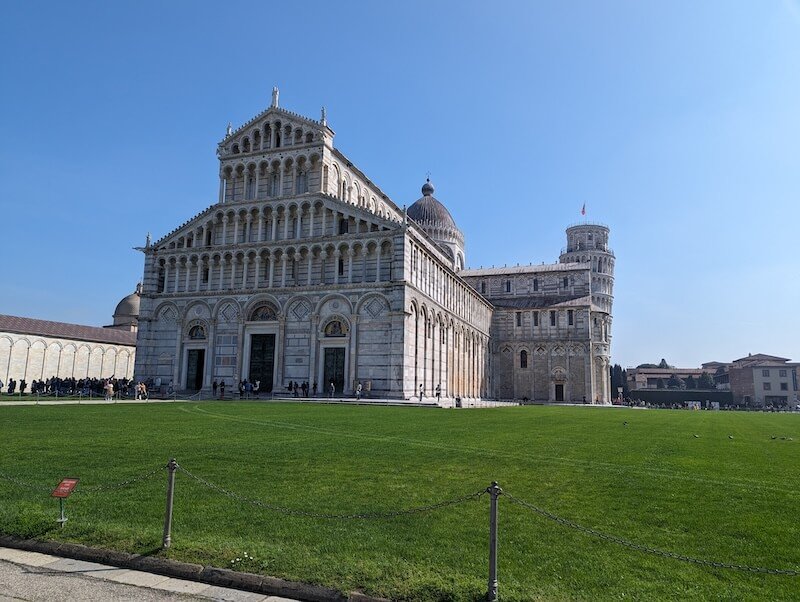
Most people visit the Leaning Tower of Pisa in one of two ways: on a day trip from Florence or spending a few days in Pisa, dedicating some proper time to this Tuscan city.
Personally, I recently visited Pisa on a day trip from Florence, and I didn’t think it was nearly enough time—I was left wanting a lot more!
Whether you visit on a self-guided day trip or visit Pisa for a few days independently, you will arrive at the Pisa train station, Pisa Centrale. You can leave your luggage here if it’s convenient, or you may want to check into a hotel first if you are staying in Pisa overnight.
Either way, from Pisa Centrale train station in the city center, you can make an easy 20-minute walk straight to the Piazza dei Miracoli (formerly the Piazza del Duomo).
You’ll quickly be greeted by Pisa’s most endearing and iconic attraction…. and thousands of less endearing tourists taking cheesy photos with it.
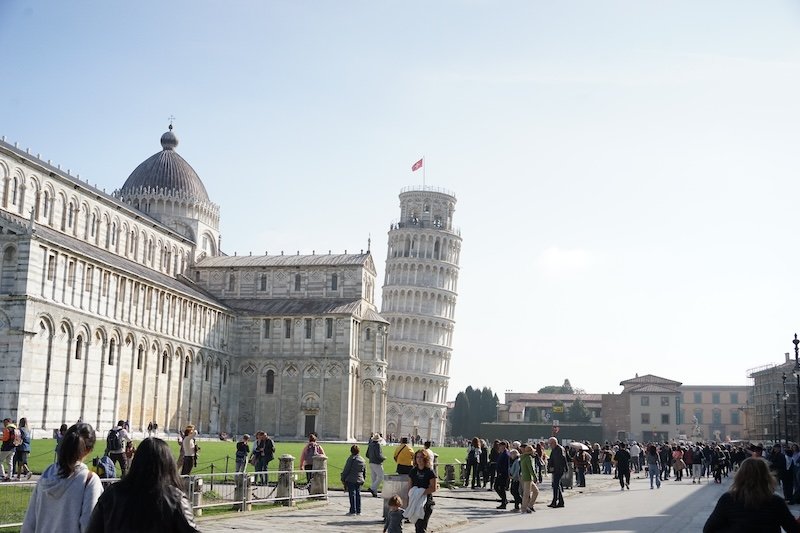
For a cool side trip before visiting the Leaning Tower, just around the corner from the Pisa, you can make a little detour to see the famous ‘Tuttomondo’ Keith Haring mural.
It’s one of the last murals created by Haring before he died from complications of AIDS. It’s located on the wall of the Sant’Antonio Abate church.
Some people may arrive at the Pisa airport, which is extremely close to the town center… You could even walk if you choose as it’s only 2 kilometers away from the town center!
That said, since most people have luggage, they take the Pisa Mover for five Euros to the train station and then walk to the Leaning Tower of Pisa from there.
Getting Tickets to Climb the Leaning Tower of Pisa
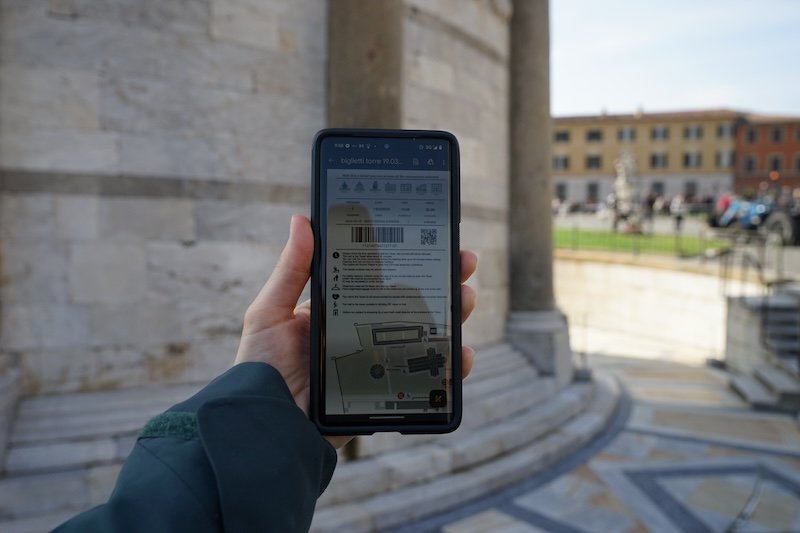
To climb to the top of the tower, you need specific Leaning Tower of Pisa tickets with a dedicated time slot. You must carefully observe the time of your visit. It’s for a 30-minute window, and you must arrive on time within that window to be able to use your ticket.
The best way to ensure you have a reserved time slot to climb the Leaning Tower of Pisa is by booking online in advance well ahead of time.
You can also try to go to the ticket office on the same day, but don’t count on it, because in peak season, it’s pretty common for all the tickets for the day to be sold out.
Your timed ticket to visit the Leaning Tower of Pisa will also get you fast-track access to the Pisa Cathedral anytime that same day.
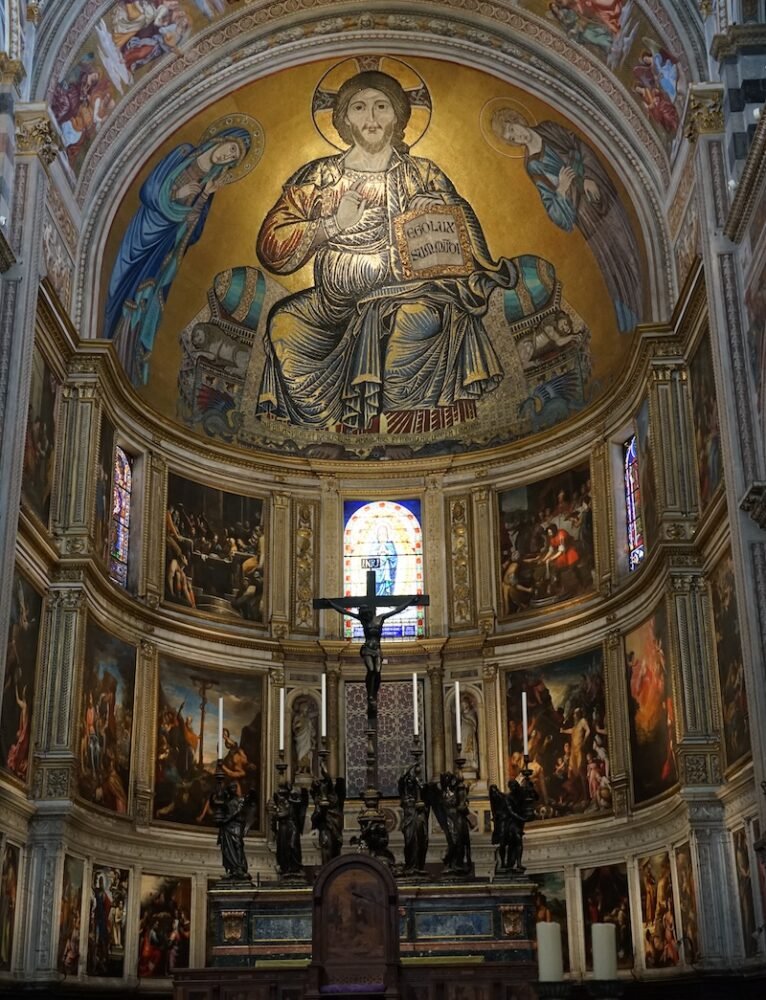
While visiting the Pisa Cathedral is technically free, those who do not have a bundled ticket for other sites in the Piazza dei Miracoli will have to wait in a longer line. You, on the other hand, get to skip it!
If the individual tickets to climb the Leaning Tower are sold out, don’t fret — you can take a guided tour that includes the city of Pisa as one of the stops and choose an add-on that includes tickets to the Leaning Tower.
These Pisa Tower tickets are often booked in advance from a separate supply of tickets, so you can usually get tickets this way, even when they are sold out on the official website and GetYourGuide.
What’s It Like Climbing the Leaning Tower?
Climbing the Leaning Tower of Pisa is a pretty stress-free and easy experience, especially compared to other climbs I’ve done in Italy, like Brunelleschi’s Dome in Florence and the Terraces of the Milan Duomo. In comparison, I found those really crowded and disorganized.
The line to climb the Leaning Tower is well-managed and runs quickly, so you don’t have to wait too long. However, they only allow people in the next time slot to be in line, so observe your timed-entry ticket carefully.

The security is also speedy and efficient for easy access to the tower. Note that security does not allow any bags for security reasons — not even small backpacks! — but there is a free cloakroom that you can use.
They carefully stagger the group times so that the narrow spiral staircases to ascend and descend the tower are manageable and not too crowded.
Before climbing the tower, they have everyone sit in a rounded bench area at the bottom while listening to a brief informational overview of its history. This also helps ensure the tower staircase is manageable, as people from the previous time slot need to descend.
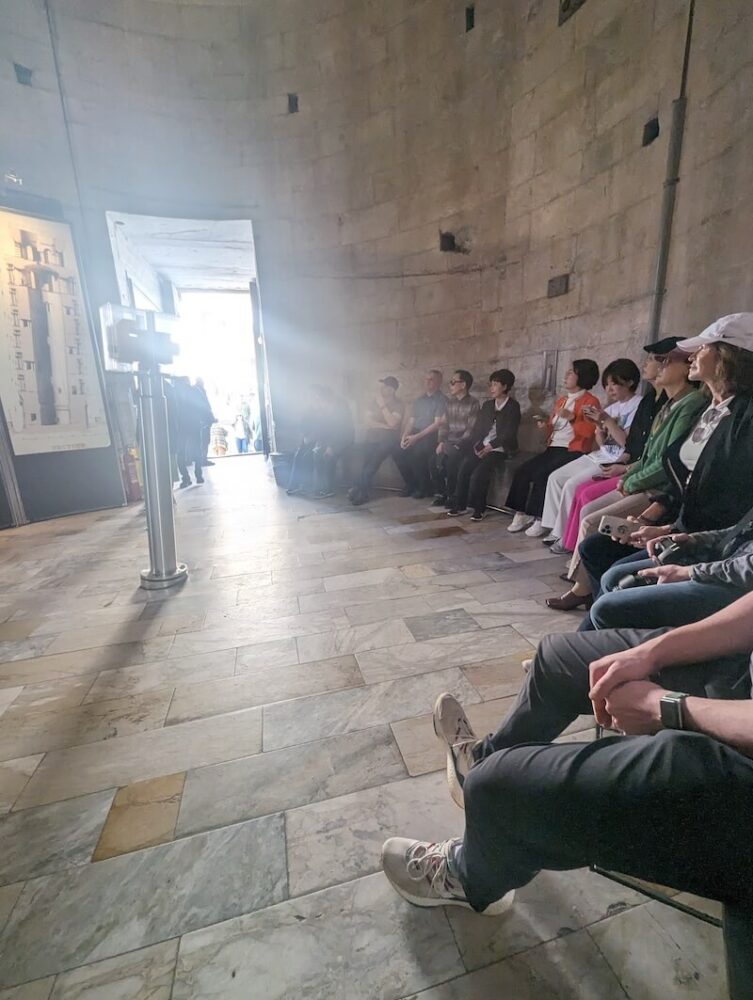
Once you’ve heard the presentation, you can start going up the (very narrow) spiral staircases.
Prepare for some serious cardio: you’ve got 5 staircases ahead of you with 269 steps (according to this article, which went and counted every single step themselves — now that’s the kind of petty level of pedantry I can truly respect).

You’ll reach the seventh floor first, opening to beautiful views of the Duomo of Pisa.
If you go at the right time, around 10 AM, you’ll see a cool sight: the shadow of the Leaning Tower casting a cool shadow over the Duomo!
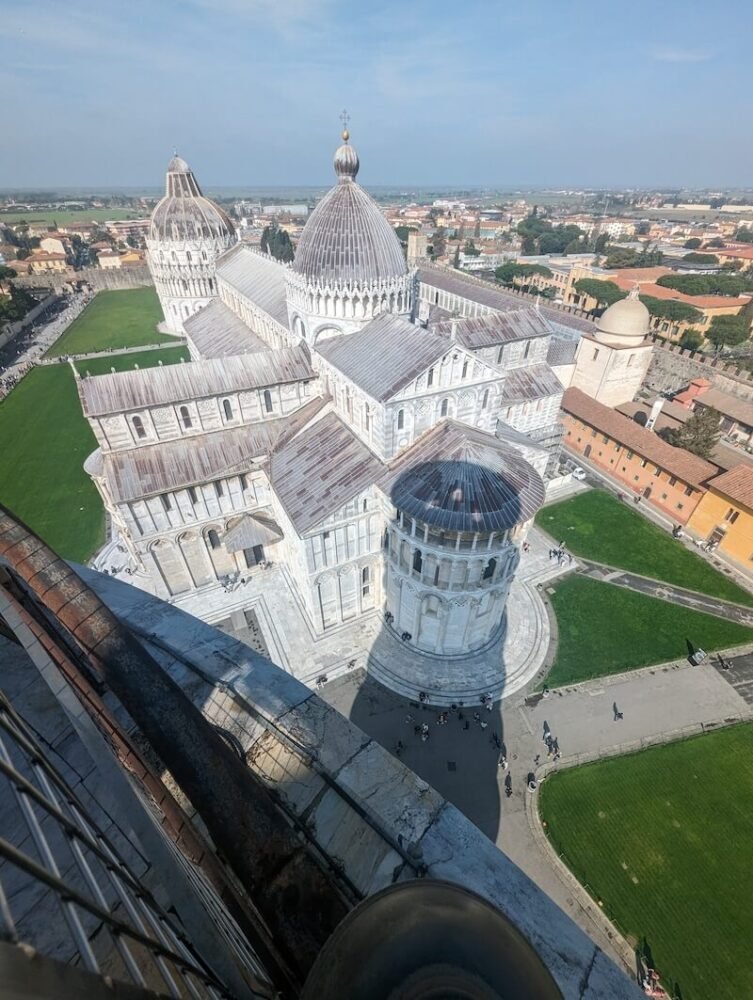
But the climb’s not over!
You can go up one more staircase to the eighth floor, where you can see the bell chamber and the tallest views over the Campo dei Miracoli, as well as 360-degree views around the rest of Pisa. Now that’s a view!
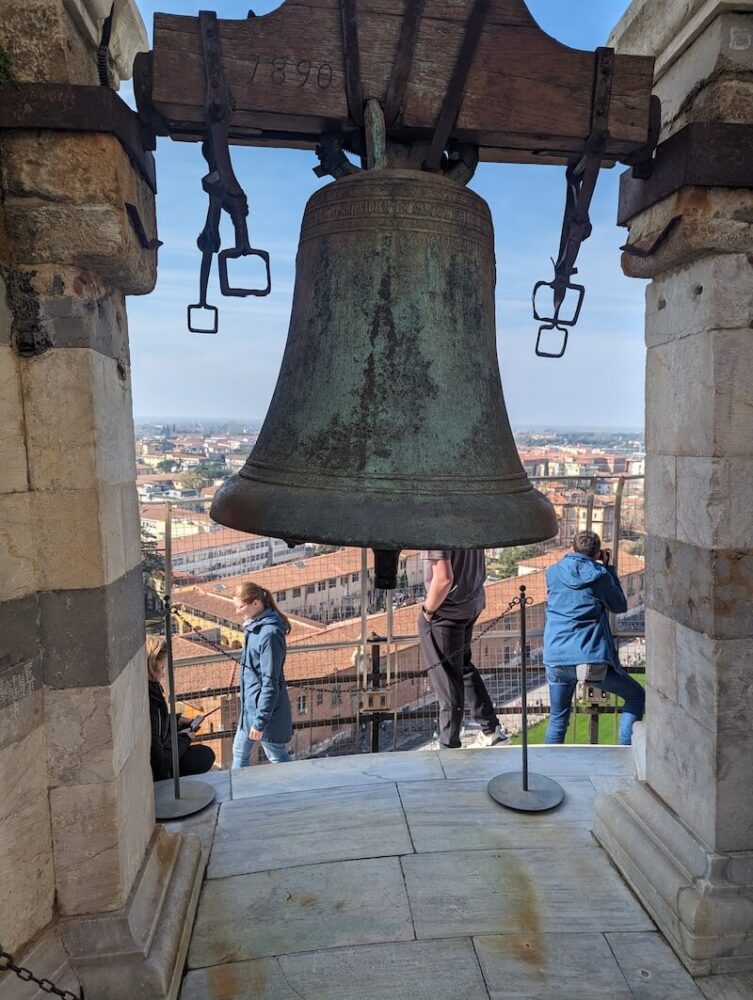
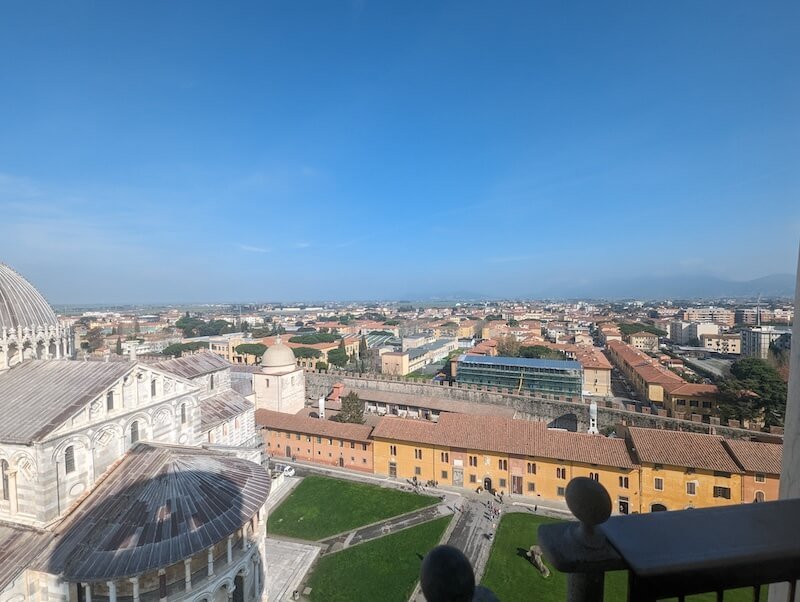
Leaning Tower of Pisa Admission Hours and Tickets
The Leaning Tower of Pisa has straightforward admission hours that don’t change much from day to day.
From April through September, the opening hours are from 9 AM to 8 PM. From October through March, they’re just one hour shorter, from 9 AM to 7 PM.
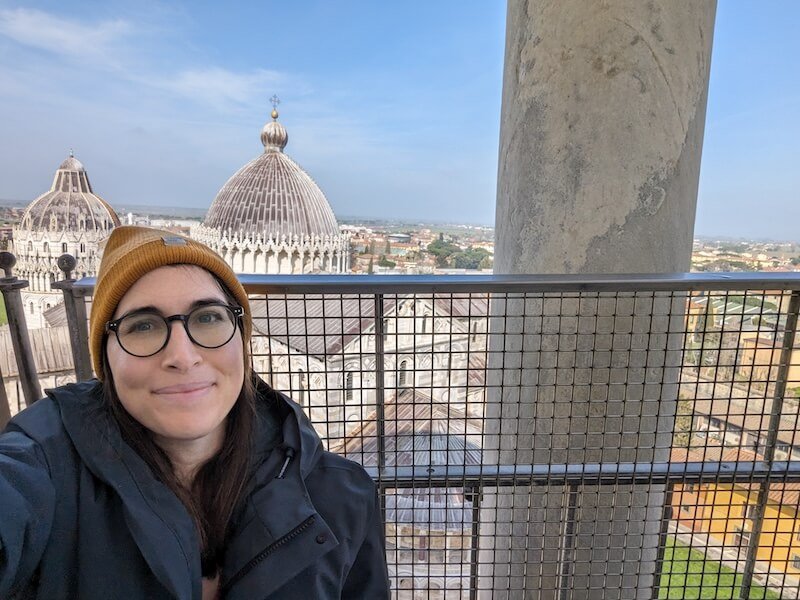
Throughout the year, the last admission is 30 minutes before closing, as it takes a minimum of 30 minutes to climb to the top of the Leaning Tower of Pisa and enjoy the views.
To ensure you snag a time slot, be sure to book your tickets ahead of time. Skip-the-line tickets can be booked in advance here.
Other Attractions in the Square of Miracles
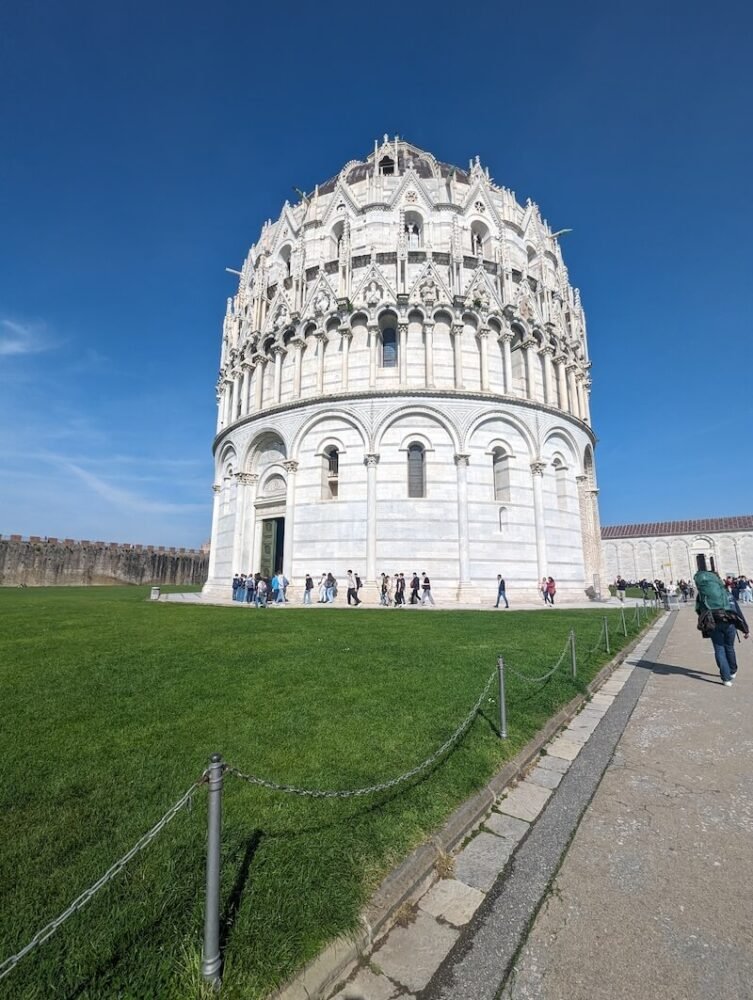
In addition to the must-see monument, the Leaning Tower of Pisa, don’t miss a few other highlights in the Piazza dei Miracoli if you have time. Together, they constitute a UNESCO World Heritage Site.
In the interest of saving your time, I won’t go into too much detail, but the places you can visit in the Piazza dei Miracoli are:
- Duomo di Pisa (Cathedral of Santa Maria Assunta): A gorgeous cathedral built in 1063, a hallmark of the Romanesque style that Pisa developed. The interior is particularly ornate and unique, with its gorgeous dramatic stripes of marble and several beautiful mosaics.
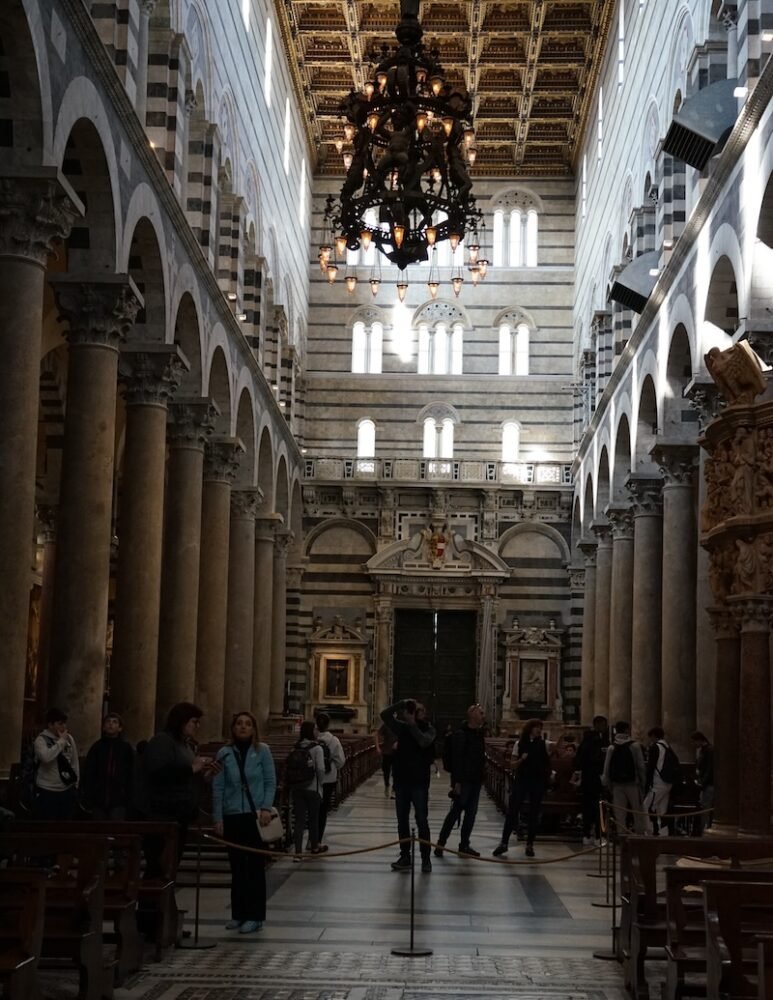
- Battistero di San Giovanni (Baptistry of St. John): A small, rounded building with a large dome constructed in 1152, shaped so to encourage beautiful acoustics. Like the Duomo, it’s notable for its beautiful marblework that is emblematic of the Pisan style.
- Camposanto Monumentale (Monumental Cemetery): This beautiful cemetery is set amidst a cloister filled with frescoes, surrounded by sarcophagi and tombs of prominent locals. It is a somber but beautiful place to visit away from the hordes of tourists elsewhere in the area.
- Museo dell’Opera del Duomo (Cathedral Museum): Just as Florence has its own museum dedicated to its cathedral, so too does Pisa. This museum houses works that were once part of the cathedral and baptistry, providing more focus and curated context on these beautiful works.
- Sinopie Museum: Here, you can find some drawings made for the frescoes inside the Camposanto, which show a beautiful insight into the artistic process for creating these larger-than-life works.
Allison Green is a former teacher who has been travel blogging since 2016. She has a Masters in Teaching and a B.A. in English and Creative Writing. Her blog posts merge her background as an educator with her experience traveling to 70+ countries to encourage ethical, meaningful travel. She has been a speaker at the World Travel Writers Conference and her writing, photography, and podcasting work has appeared in National Geographic, CNN Arabic, CBC Canada, and Forbes, amongst others. Now a full-time traveler, she has lived in Prague, Sofia, New York City, and the San Francisco Bay Area.
